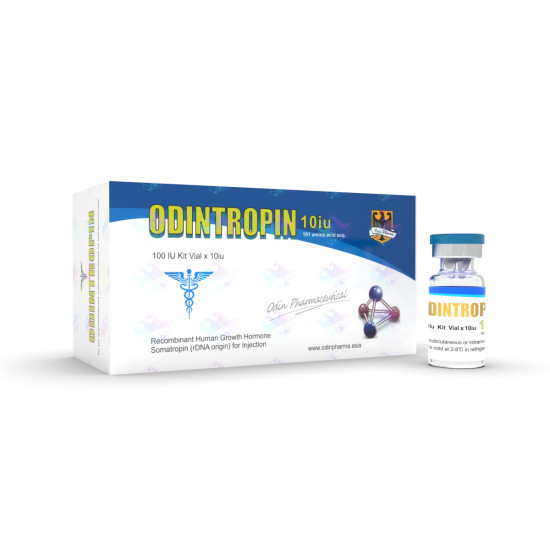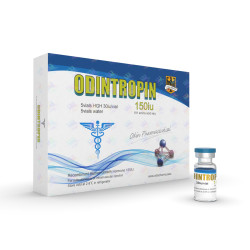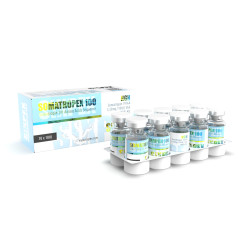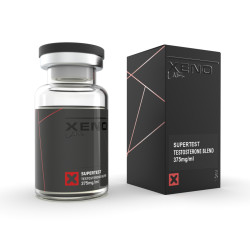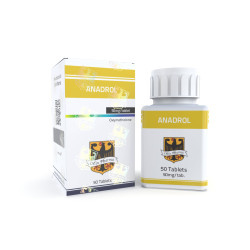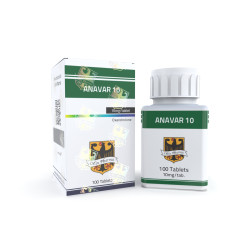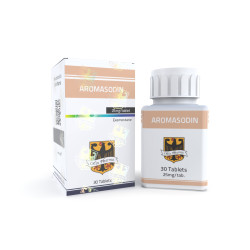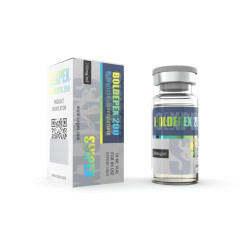Optimizing Human Growth Hormone Usage and Dosage for Weight Loss
1. Introduction to Human Growth Hormone (HGH) and its Role in Weight Loss
Human Growth Hormone (HGH) is a pivotal peptide hormone that the pituitary gland within the brain generates. Nearly every cell within the body has its own HGH receptors, highlighting its indispensable importance in bodily function. However, when it comes to its role in weight loss, it is its metabolic effects that generate the greatest appeal. HGH is crucial in nutrient metabolism, particularly in fat metabolism. To release energy, fat must be broken down or mobilized from storage sites in our adipose tissue, then ultimately repositioned and burned within the mitochondria of our body cells. The hormone is imperative in initializing the sequence of these mobilizing actions and in defending sugar levels from either heading too low or too high. Consequently, adults with a permanent shortage of HGH suffer from fat accumulation and increased weight.
In accordance with the benefits adults with an HGH deficiency experience, an increasing number of adults look to reap knowledge surrounding HGH to boost weight loss. While you may find a ton of research on using HGH for boosting muscle growth, fat burning, and tamping down on the effects of aging, eliminating unwanted weight is a major issue here. In fact, for this purpose, it is well known that people burn their fat even after several years of taking HGH. Tied to this will be discussions on optimizing HGH usage and dosage, which is a growing trend and reflects the sensibility of measuring the body’s capability to any drug’s action. Typically, growth hormone generation is heavy during one’s youth, wanes in adulthood, and is relatively negligible in the older years. Nevertheless, our lifestyle choices, diet, and age can all impact this hormonal foundation of human growth, either giving a lift or serving as a roadblock.
2. Benefits of HGH for Weight Loss
Using HGH has become popular thanks to more media attention on overall health and biohacking. With so many advertisements about it, people would like to know if HGH could play an important part in weight loss. We posit that HGH's main usage in a weight loss program would be to protect hard-fought muscle while on a diet or exercise, but also that low doses and high doses of HGH might push different buttons. It is important because so little work has been done to see what the effects of HGH in weight loss adjuncts are. Though some people employ HGH to take off a few pounds, it is akin to attempting to mow your lawn with a hammer when better and cheaper options exist.
Ghrelin is a peptide that signals hunger in the stomach. Recently, it has been shown that ghrelin also upregulates your natural production of HGH or your body's fat pill. Studies showed that when HGH is given to healthy men, 50% more fat was lost during prolonged calorie restrictions than was just taken off plain. The HGH-treated people lost the same amount of weight as the plain, but gained 6-15 pounds of muscle while the plain lost 6-15 pounds of muscle. The mechanism for this appears to be twofold: First, HGH increases the conversion of T-4 to T-3 in hypothyroid individuals. The increased metabolic rate means more calories are burned than with diet alone; other studies report this degradation. So at the least, HGH can increase the efficiency of calories burned by 15%.
2.1. Increased Metabolism
Human Growth Hormone (HGH) has been shown to increase metabolism. When a person consumes something that has calories in it, these calories can be used to fuel body processes, or they can be stored for later use as fat. HGH favors using calories to fuel body processes. HGH increases the amount of key enzymes necessary for the breakdown of fats, called triglycerides, which can then be released into the blood circulation as free fatty acids and can be burned for fuel. These fats produce energy per gram when burned, and so HGH’s ability to increase fat breakdown gives the body more energy to use. The increased metabolism achieved from elsewhere in the body burning more fat accomplishes the same purpose of the un-metabolized fat entering the bloodstream and making the liver secrete IGF-1.
HGH routinely leads to major improvements in metabolic rate. When weighing people with a varying degree of HGH deficiency, those with the least had a reduced body metabolism compared to normal individuals; those with some levels had a reduction, and those with the most had a metabolic reduction. Men and women who have problems with their pituitary glands have reduced metabolic rates (and tend not to be very lean), and this is rapidly reversed with human Growth Hormone therapy. This certainly increases how much these patients can eat without adding body fat. In one study of hypopituitary patients, chemically derived hGH increased the basal rate of heat production by a percentage. In two separate studies on the metabolic impact of a treatment, the studies did not directly report metabolic rate — only on related factors such as fat oxidation and oxygen uptake. However, both studies showed that the patients could eat more without technically being in caloric surplus. In one study, days of treatment led test subjects to be able to eat more calories for days, while in the other, days of hGH administration led to people eating more calories per day without equally proportionate body fat gains.
2.2. Enhanced Fat Loss
A primary benefit of using higher HGH inserts for fat loss is the enhanced capacity to lose fat compared to not using them. HGH stimulates lipolysis, the process by which the body breaks down its own fat stores and converts them into usable energy. Prospective users have asked about running HGH for no longer than one week in length for fat loss purposes, and quite possibly, due to the short duration, fat loss outcomes would be minimal. Longer-term HGH usage is necessary to obtain the full effects and benefits, including fat loss, as it generally takes time for the hormone to circulate, exert its effects, and metabolize you. Exogenous HGH, meaning the usage of the hormone that has been exogenously applied via supplement, can be classified as being used in higher amounts than naturally produced levels of HGH.
A number of studies have reported heightened responses in total individuals when it comes to losing total body fat ratio via HGH supplementation, although the particular amount of fat reduction can greatly differ from one person to another. Some outcomes show fat reductions averaging 5-10%, meaning if a person's body fat were 20%, they could decrease it to as low as 10%. Lower numbers are generally from shorter-term or lower-dosage studies. The primary mechanism by which HGH helps burn fat is the initiation of lipolysis. Specifically, HGH acts to stimulate the release of fatty acids via enzymes that cause the release from stores via the adrenergic system. This results in the fats being released from storage and either preferentially utilized for energy production, or the fats are utilized during exercise that one partakes in. HGH will predominantly cause fat oxidation in the region being targeted; HGH has shown to preferentially deplete fats from the trunk area in particular. In simple terms, this means that the metabolism of fats applies; the primary region for this to occur would be in areas where stubborn body fat accumulates. Most commonly, such areas would be the abdominal region. Additionally, regions of the body that have less blood flow will experience the effects of HGH to a lesser extent compared to body areas that have greater blood flow. In simple terms, using areas or body parts with more adipose tissue and having an abundance of blood flow simultaneously, fat loss can even be observed to be initiated theoretically more. This is because lipolysis is about fat oxidation being performed at the point of release. Given that blood flow is the carrier of released fats being utilized, more blood flow generally translates to more fatty acid usage. Keep in mind the above is an application of scientific theory; real-world results with exogenous, supplemental HGH show that the effects on fat, while present, are not as clean-cut as the above information may lead one to believe and are not 100% stable. Because of the lack of significant blood flow to areas of local subcutaneous fat storage, it is noted that even though it does have some activity in this area, this fat can still be difficult to lose. HGH, as anything less than the originally recommended dosages, will prove ineffective.
2.3. Preservation of Lean Muscle Mass
The ability of HGH to preserve lean muscle mass during weight loss is one of the most significant benefits of using it, and this is mainly applicable to individuals who are physiologically capable of producing such levels. Muscle is a strong determinant of metabolic rate and helps to keep resting energy expenditure higher. HGH is also catabolic, with a greater effect when following a low-calorie diet, and thus can retain metabolic advantages, especially in dosages that do not carry the risk of other adaptations that are typically seen with higher doses used in supplemental form. With deficit-induced reductions in thyroid hormones and androgens, HGH can still exert its fat-loss benefits by increasing oxidation of fats and fatty acids, provided a positive nitrogen balance and thus optimal intake of dietary proteins. A primary benefit from HGH usage is the preservation of muscle mass associated with weight loss, which will occur even if hormone injections are not paired with strength training.
Resistance training in combination with HGH usage will provide superior results. Intense resistance training induces hypertrophy of both fast- and slow-twitch muscle fibers, with the former being of greater magnitude, indicating the means by which injectable HGH can present a risk for muscle expansion, providing that a diet high in carbohydrates is being followed. A rudimentary dosage of HGH can aid in quickly restoring muscle, even after a prolonged break from training or from utilizing doses that assist the muscle, but not to an extent as to induce muscle expansion or compound changes in a given topography. Bodybuilders are the main users of HGH, even in physiologically adequate doses, to restore their physique. A therapeutic level of GH administered in low doses helped to restore muscle mass.
3. Factors Influencing HGH Levels
Three significant factors influence human growth hormone levels: intrinsic conditions (gender and age), diet and nutrition, and the release of somatostatin and somatotropin from the hypothalamus. As an intrinsic factor, age is associated with a decrease in human growth hormone. HGH levels naturally begin to decline during the early part of the third decade of life and continue to decrease until we die. This decrease in HGH leads to an increase in fat mass and a decrease or redistribution in lean body mass. The clinical implications of these applications are far-reaching and have profound implications for all body systems. Adults usually gain an average of 1 kg or more in fat per year and lose the same amount of muscle mass until they die. Weight, fiber, skeletal muscle inner components, and aging with other tissues all adapt to protein and age. Men have a 20% loss of muscle strength after 50 years and about a 30–50% decrease in muscle strength for people aged 70–90.
Many other factors influence the release of HGH at specific stages of life and during the sleep-wake cycle. It is now well accepted that even modest changes in body composition index, such as dieting, macronutrient intake, and the timing of exercise, can contribute to the non-pharmacological release of HGH that potentially affects muscle mass. In principle, anyone interested in increasing muscle mass is also interested in increasing HGH. Somatotropic cells in the pituitary gland have specific GHRH and ghrelin receptors. While GHRH stimulates and increases HGH, somatostatin inhibits and decreases HGH. Research shows the intake of amino acid derivatives as well as amino acid-containing supplements before exercise, thus promoting the release of HGH. Kinetics do quite the opposite. Such an amendment should not right away be created to obtain. In consequence, it seems to still be safe to participate.
3.1. Age and Gender
Age has an important effect on human growth hormone (HGH) levels, as HGH starts to decline around 35 to 50 years of age. There are a few age-related physiological changes that affect HGH levels. First, abdominal body fat increases and lean body mass decreases in adults as they age due to a deceleration in metabolism. The largest contributors to an individual’s total daily energy expenditure are resting metabolic rate and energy expended on physical activity. As aging decreases an individual’s physical activity and percentage of lean body mass, it also subsequently reduces the individual’s metabolic rate and indirectly increases the total percentage of body fat. Another physiological change occurs with blood glucose concentration. A normal aging process seems to have an effect on the normal blood sugar concentration in the morning. In those individuals under 30, fasting blood sugar levels in the morning range from 75 to 92 mg/dL. However, in individuals over the age of 60, they range from the low 80 mg/dL to 99 mg/dL.
Males and females of all ages also secrete HGH in their bodies. The amounts utilized are equal because of the presence of testosterone and estrogen in the male and female bodies that signal their respective pituitary glands. A majority of the HGH is released during sleep, with the first 90 minutes being the most intense pulse. This can be attributed to the peak period of HGH secretion, which occurs somewhere between two and a half to four hours after sleep onset. During adolescence, traumatic events such as disease and malnutrition will inhibit the release of HGH. In children and adolescents, the standard of care for HGH deficiency is to initiate treatment with biosimilar drugs of human growth hormone. In order to assess the condition of bones and body before HGH therapy is considered, a complete physical examination will be conducted. Insulin-like growth factor-1 (IGF-1) and insulin-like growth factor binding protein-3 tests measure circulating levels of IGF-1. Parents may begin noticing a few changes in their children within the first two months of HGH treatment. Concerns are also present in children who acquire or develop pituitary gland injury. Lower HGH levels can affect body composition in the aging adult. HGH therapy has been shown to minimize body fat and muscle loss in the elderly. Testosterone is also responsible for a role in the HGH response. It has been observed that HGH levels may drop as body fat increases.
3.2. Diet and Nutrition
The amount of human growth hormone (HGH) produced by the body is largely dictated by the functioning of the pituitary gland, a phenomenon that is controlled by the release of growth hormone-releasing hormone (GHRH). Ingesting certain foods can elevate HGH secretion even further, by way of naturally signaling the body to secrete more GHRH. In this way, we can think of diet and nutrition foremost as a tool for influencing the total daily output of HGH, and secondly, as a means of dictating how the body will respond to already produced HGH in the bloodstream. It follows, then, that the ideal diet to maintain healthy circulating concentrations of HGH should work twofold: to encourage optimal overall output of HGH and to ensure that this hormone reaches its target organs and tissues by not compromising insulin sensitivity or undermining the activity of other tissues.
A diet best suited for managing HGH levels therefore should aspire to be balanced in macronutrients (namely with high protein and moderate levels of healthy fats), and low in simple carbohydrates and sugar intake. It might also be beneficial for professionals and patients to appreciate some of the specific nutrients that help to naturally elevate HGH levels. Consumption of the amino acids L-lysine, ornithine, L-arginine, and L-glutamine, for instance, is well known to elevate HGH levels, as are the omega-3 fatty acids contained in fish oil. Some research has shown that L-glutamine might also reduce the amount of time it takes a patient to recover post-surgery, and intake of this nutrient is likely to be beneficial in post-operative management. Consuming supplements and metabolic drugs as an alternative to providing the body with the proper nutrition and thereby improving food product nutrient content first and foremost may not present the same health benefits as good dietary decision-making.
Finally, and importantly, we should not forget that diet is just one leg of the triumvirate of effective HGH management; exercise, or physical activity, is the other associated leg. The lifestyle decisions surrounding these two modifiable factors are not independent of one another, as patients of one modality are encouraged to make choices that will further enhance the benefits provided by the other. The body’s production and secretion of HGH occurs in both a pulsatile and diurnal manner. The majority of this hormone is released by the pituitary gland during sleep, particularly during slow wave sleep. Therefore, it could be beneficial to ensure that easily digestible proteins, glutamine, niacin (which is a precursor to GHRH), complex carbohydrates, and healthy fats are ingested several hours in advance of sleep so that levels are less likely to drop and wake the individual. Should the HGH injection protocol to be employed require the patient to self-administer their shots, taking it before sleep may be a useful choice to help ensure compliance.
It is important to note that a properly planned diet is not sufficient to ensure our goals are met; inactivity, especially high levels of sedentary behavior, has been linked to insulin resistance, which may be of concern for those worried about the side effects of chronic HGH supplementation. When performed at appropriate levels and volumes relative to caloric intake and duration, resistance exercise reverses the age-related decline in the total amount of HGH released by the body. Modulating these two factors in a complementary manner forms the basis of effective HGH optimization.
3.3. Exercise and Physical Activity
A significant factor affecting levels of endogenous human growth hormone (HGH) is physical activity and exercise. It is well established that HGH secretion is heightened after resistance training, strength training, and also following high-intensity interval training and moderate aerobic exercise. The physiological mechanism by which gym exercises and weight training increase the level of HGH is through an increase in blood levels of lactate and growth factors combined with a reduction in blood glucose levels and glycogen depletion in muscles. This reduced glucose availability may lead to higher secretion and mobilization of HGH and other stress hormones in response to exercise. This cascade of events within the body is similar to those of fasting.
Contemporary research has confirmed a dose-response relationship between exercise intensity and blood HGH peak, whereby serum HGH elevation was greater with higher intensity exercise. Studies have demonstrated that circulating growth hormone can increase during a mild aerobic exercise training session; however, escalation of heart rate through vigorous aerobic exercise is crucial in increasing the secretion of growth hormone. Regular physical activity and high-intensity interval training increase HGH production and assist in obtaining a hormone level closer to the maximum production level. It is also important to remember that all these physical activities have an important role in your overall wellness and metabolic health. Thus, not only do these activities benefit HGH production, they can assist in creating an energy deficit which, together with dietary best practices, results in weight loss. High-intensity interval training and gym exercises also increase testosterone production, leading to more muscle mass and further increasing the metabolic rate. Regular high-intensity interval training and gym exercises also increase sensitivity to insulin and make all other anabolic hormones, such as insulin and IGF-1, more effective.
4. Safe and Effective HGH Dosage Recommendations for Weight Loss
The information in this document is for informational and educational purposes only. It is not and should not be considered medical advice. As you adjust your dosage, be sure to consult with competent healthcare professionals who understand your unique health situation and personal history. Experimenting with average and proven HGH dosage is generally a place to begin in designed therapy. The most effective and results-driven approach will start with a consultation and designing an individualized treatment plan grounded in your specific health assessments and testing results. Remember, if you're on the journey to deep weight loss, use HGH as part of a comprehensive approach. A support system that includes a complementary eating strategy targeted toward sustainable fat loss, along with whole food nutrition and professional health supplementation, helps to deliver powerful, whole body benefits.
A dose of 500 to 1,000 mcg administered once per day for no more than 28-30 days creates a standard use pattern. Most women start fast-acting and can break down and burn fat with daily dose injections of 250-500 mcg at a time. Keep taking HGH doses daily until your provider tells you it is time to reduce frequency or dose, signifying improved metabolism and lower fat-focused therapy. You will likely notice increased energy, mood, and focus from the beginning of HGH therapy. In the first 28-30 day treatment, women can work toward eliminating approximately 10% of total body fat. Men who generally have up to 20 percent body fat can eliminate up to 15 pounds of fat after 30 days of steady HGH use. It's very important to consult with healthcare professionals when adjusting your dose, as personal biometric differences may make gradual increases starting with a lower initial dose safer and more effective.
4.1. Medical Supervision and Monitoring
If you are considering taking HGH for weight loss, self-prescribing is not recommended. It is unsafe to use Human Growth Hormone (HGH) for weight loss without medical supervision. It is possible that if left untreated, you may suffer the health consequences of high HGH levels for life and even lose some of the benefits you may have been able to achieve. An HGH therapy doctor can evaluate you and get the appropriate blood tests and a thorough medical history taken for your particular needs. You should plan on regularly checking in with your doctor by phone, secure messaging, or in person while taking HGH therapy. This will be necessary to provide you with the most updated treatment plan.
It is important for the physicians who supervise people taking HGH to look at hormone levels and patient symptoms regularly so that they know whether or not a treatment is helpful or harmful. It is still important to continue to assess whether or not the medicine is helpful as well as any signs and symptoms that may have been caused, such as high blood sugar. The drug should not be abandoned without attempting it, but it may be stopped if it is not working, if there are too many side effects, or if the patient stops adhering to the treatment plan. Side effects can be minimized by keeping doses low and increasing the dose only if the drug does not seem to be working. Always make sure you're taking the right dosage. These guidelines enable the patient to benefit from the tried-and-true benefits of HGH use while avoiding complications. It will help you judge whether the benefits are outweighed by the risks. Always be prepared to allow your doctor to communicate openly and efficiently with you.
4.2. Individualized Dosage Adjustments
Human Growth Hormone (HGH) requirements for adults vary. Age, gender, body composition, disease states, normal hormonal status, and overall health determine how much HGH a given individual will require in order to change their body composition. Over the many years that HGH has been used for various treatments, case-by-case observation of effects, side effects, and recovery periods have been used to establish variable dosage plans. Dosing could also be guided by pharmacy compounding software based on a number of known mineral and lipid markers as well as the overall health status of the patient. Doses can also be designed on the basis of individual age, weight, and HGH levels. The easiest single starting dose for someone looking to take HGH for general health and well-being is typically 1.0 IU daily or 1.5 to 3.0 IUs shared in two doses. If insulin or an insulin derivative is also being used, dosages are often shared in two doses to reduce the risk of rapid changes in potassium and sodium.
If adjustment is deemed necessary, like all illicit drugs, a patient should not continuously take a dose of any drug if no results are being seen. This fact remains true for somatropin. At 2 to 2.5 IUs a day, and 3 months after beginning that dose range, there will be an obvious change in your physiology. At that time, even in the absence of testing, you could double your dose to 4 to 5 IUs per day on average, taking into account body weight, and note that the changes that have occurred over the last 3 months are only gradually improving or they are at the status quo. If improvement is slow or non-existent, then increase your dose by 2 IUs per shot every 6 months until you see improvement, and then remain at this dose for another year or so while continuing to test your IGF-1 level in order to monitor health and to remain at an optimal level.
5. Potential Side Effects and Risks of HGH Use
Potential side effects and risks associated with HGH: Although HGH is often safe for adults when prescribed and administered by a medical professional, it can come with risks. The reported side effects are typically inversely related to the amount of the dosage. At the lower end, there can be bloating, swelling of the arms and legs, joint pain, and the first few injections can be painful – this usually resolves after the first week or so. At the higher end, human growth hormone has been associated with carpal tunnel syndrome as well as enlargement of facial features and bone disruptions. A few other symptoms that may develop are muscle pain, reduced glucose tolerance, increased risk of diabetes, breast swelling, and growth in hands or feet.
The different side effects can range from discomfort to expensive reconstructive surgeries. Long-term use of HGH for the purposes we are discussing may cause insulin resistance, fat buildup, and, if misused, a kickback where users actually lose muscle and strength over the long term. Undesirable cosmetic side effects such as a nose or ears that keep growing, widespread body swelling that gives an abnormally bloated appearance can occur. It is also recognized that HGH may continually increase basal metabolic rate, which may in and of itself create toxic metabolic byproducts. This should be watched for by medical professionals if this technology were to be applied for the general population seeking general weight loss. HGH releasing peptides have been reported to be dynamically more anabolic than growth hormone itself, both in the muscle, bone, and likely in the liver. This is likely to promote ill health in main organs, leading to liver, spleen, gallbladder, and pancreas dysfunction and hypertrophy. Hypersecretion of endogenous GH in adults can lead to numerous potentially serious side effects if somatropin replacement is abused, used in non-indicated conditions, overdoses, or used in children who are not deficient in HGH as an adult. This can lead to metabolic disorders with glucose intolerance, frank diabetes, cardiomyopathy, cancer, hypertension, and reduced life expectancy. Unsupervised abuse of HGH is not only banned in sports but in fitness shows as well. It is advisable to be under the care of a medical professional and have any side effects immediately rectified.

